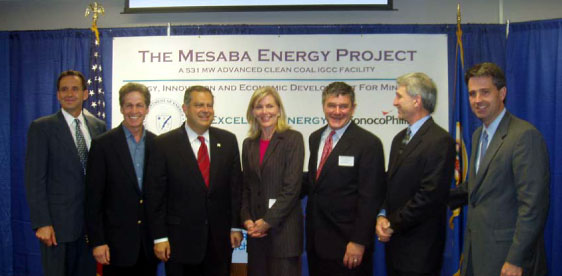Homework for PUC rulemaking
May 26th, 2013
There’s a meeting, the first meeting, this week of the Advisory Committee for the Public Utilities Commission’s rulemaking, Chapters 7849 Certificate of Need, and 7850 Routing.
Rule changes are something I’ve been trying to make happen for what, decades?!?!?! I’d finally begun filing rulemaking petitions back in 2010, note what I’d suggested for Minn. R. Ch. 7849 back then — NOTHING — I didn’t get Ch. 7849 done! Well, drat, 1400, 1405, 7829 and 7850 but no 7849:
So back to the meeting. Look who all is on the committee, and look who is not:
And here’s what the Commission is proposing for Minn. Rules Ch. 7849, be sure to check carefully to get a handle on what they’re adding and what they’re taking out:
And then be sure to compare the 7849 with the Certificate of Need statute to make sure it’s consistent with black letter and intent:
Where’s their proposal for 7850, Routing?
Mesaba Project loses MISO queue G519
April 25th, 2013
I love it when this happens, it’s almost as good as the results of a google image search for “Excelsior yahoos” this morning:
Big thanks to a little birdie who relayed the good news:
hee hee hee hee hee, I LOVE it when this happens…
Xcel’s decreased demand continues
April 21st, 2013
How did this happen? I forgot to post the link for the 2012 Earnings Call transcript from Seeking Alpha! And it’s a doozy. You can find the FULL TRANSCRIPT HERE.
Northern States Power – Minnesota estimates a decrease of demand in Minnesota of about 1.2% (-1.2%) in 2013:
Andrew M. Weisel – Macquarie Research
Teresa S. Madden – Chief Financial Officer and Senior Vice President
XEL Earnings Call, January 31, 2013.
Benjamin G. S. Fowke – Chairman, Chief Executive Officer and President
That’s also reflected in their SEC filing showing decreased peak demand, from 9,792 in 2011 to 9,475 in 2012, and a forecast of 9,215 for 2013:
Northern States Power 10-K (2012). Those are numbers I like to see.
Meanwhile, for example, Xcel has produced “forecasting” for the Hollydale Transmission Project that shows another picture entirely — that’s because the Hollydale application is based on old and outdated forecasts from 2006, the peak demand prior to the 2007 economic crash, and bases its need claim on a forecast of 1% annual growth in peak demand:
Hollydale Application, p. 42-48; 50-57; see also 12, 14, 35, 38; see also Table 2 and Table 3, p. 48-49. Xcel’s “Hollydale Need Addendum,” dated January 24, 2013, exacerbates this error claiming a 1.8% growth rate and using a 1.8% growth projection for its forecasts. Michlig Direct, Schedule 2, Hollydale Need Addendum, p. 24. For the full Hollydale docket, go HERE and search for CoN Docket 12-113 or Routing Docket 11-152.
What would this “Percent Load Growth Over Time” chart look like with a -1.2% and no expected improvement for the foreseeable future?
IGCC, FutureGen and Obama
April 15th, 2013
I am so tired of the wing-nut hype against Obama for his “war against coal.” Obama is promoting coal — he earned his label as a bigger coal toady than Bush when he revived the FutureGen IGCC project which Bush had the sense to drop (one of his few positive acts, well, on the other hand, maybe that was a passive languishing). As if Obama’s transmission Rapid Response Team and “fast tracking” seven transmission projects and appointing former ATC attorney Loren Azar to push transmission that facilitates transmission for coal wasn’t enough… WAR ON COAL? Give me a break… Why don’t they talk about his promotion of coal gasification? His taking money from coal interests (he is, after all, from Illinois, a coal state).
Just out, a report from the Congressional Research Service about FutureGen, the coal gasification plant that, no matter how they try, they just can’t get built.
From the report, first, a most understated explanation of the impossibilities facing this demonstration plant — that no investor would sink money into IGCC, that PPAs are outrageously cost prohibitive, and 90% capture, while difficult, means nothing if it’s not stored somewhere which is logically and physically impossible at the magnitude of coal plant production:
Congressional interest in CCS technology centers on balancing the competing national interests of fostering low-cost, domestic sources of energy like coal against mitigating the effects of CO2 emissions in the atmosphere. FutureGen would address these interests by demonstrating CCS technology. Among the challenges to the development of FutureGen 2.0 are rising costs of production, ongoing issues with project development, lack of incentives for investment from the private sector, time constraints, and competition with foreign nations. Remaining challenges to FutureGen’s development include securing private sector funding to meet increasing costs, purchasing the power plant for the project, obtaining permission from DOE to retrofit the plant, performing the retrofit, and then meeting the goal of 90% capture of CO2.…Multiple analyses indicate that there will be retirements of coal-fired capacity; however, virtually all analyses agree that coal will continue to play a substantial role in electricity generation for decades.
The earth asks enviros: What have you done for me lately?
April 8th, 2013
.
You seem to think you’re Dog’s gift to this earth…
Two things appeared in the inbox at about the same time, the first an announcement of McKnight Foundation and Energy Foundation grants in the Midwest, and from Truthout, a review and interview of Ozzie Zehner, author of Green Illusions: The Dirty Secrets of Clean Energy and the Future of Environmentalism.
First, the massive foundation to “environmental” organizations:
McKnight fights climate change with $25 million in grants
The two-year grants of $20 million to Energy Foundation and $5 million to RE-AMP, a network of nonprofits, extend existing funding partnerships and the philanthropy’s $100 million commitment, announced in 2008, to blunt climate change. The two groups will focus on developing policies and public education to reduce dependence on fossil fuels in Minnesota, the Dakotas, Wisconsin, Illinois, Iowa, Michigan and Ohio.
And on to Green Illusions: The Dirty Secrets of Clean Energy and the Future of Environmentalism. GO HERE TO ORDER.
That pretty much sums up what I’ve seen over the last 20 years…
…the binary aspect, and looking for a simple “flick the switch” solution when it’s oh-so-complicated.




